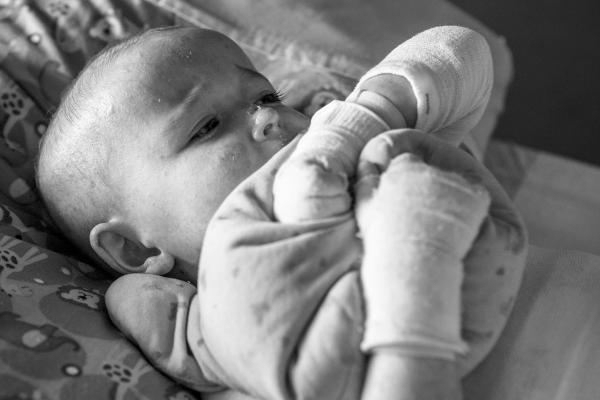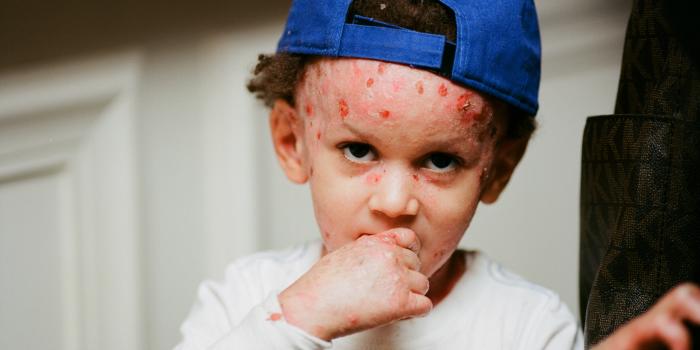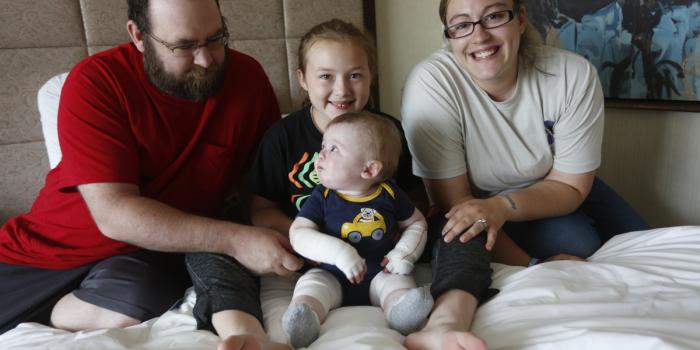*CLICK HERE TO DOWNLOAD A PDF VERSION OF THIS PAGE.
Skin infections in Epidermolysis Bullosa (EB) are an unfortunate common complication, even though caregivers try their best to keep wounds clean and infection-free in order to encourage wound healing.

Skin infections may occur in most people with EB at some point and should be addressed by a medical professional for treatment.
Even with diligent wound care, other factors beyond your control may contribute to an infection developing. Unfortunately, topical antibiotic treatment may not be enough to stave off a skin infection. An infection may require oral antibiotics or a hospital admission for IV antibiotics.
So how can you tell if a wound is infected?
There are some key signs to look for in determining whether an infection is present.
When a wound is infected, a person may have a fever or experience unusual tiredness. Meanwhile, the wound may exhibit redness and swelling, yellow or green foul-smelling drainage, and it may be painful and warm to the touch. You will also notice a delay in healing of the wound.

It is extremely important that a physician examine the wound for evidence of an infection and perform a culture to not only confirm that there is an infection, but to also test for antibiotic sensitivities so that they can prescribe appropriate antibiotics. It is vital that a skin infection be treated appropriately and quickly, as the infection could spread into the blood stream and cause further systemic complications.
If an infection is present, the wound may stay open, and will show increased redness, swelling, pain, and warmth. The wound and/or blister may also exude pus, and appear cloudy.
*Please note that all medical information given by debra of America is for informational purposes only. Our information is not intended to substitute the care and guidance given by a qualified physician. All regimens of care should be discussed with the patient's doctor. Always check with your physician prior to starting any medications or treatment regimens.






